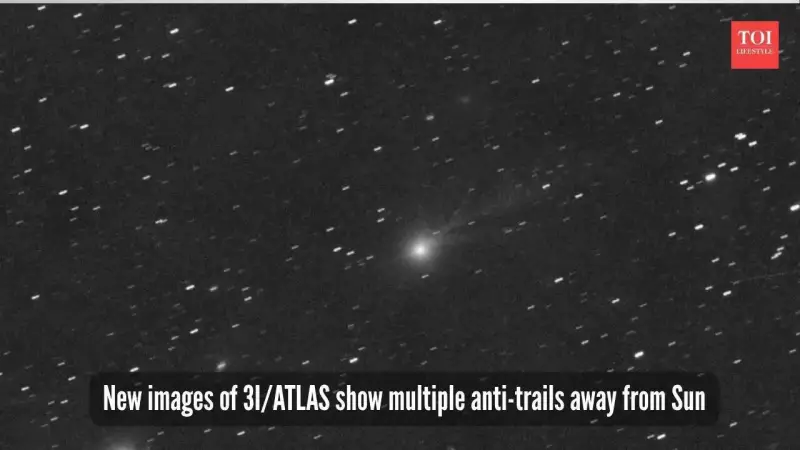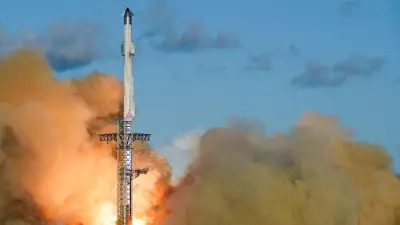
The mysterious interstellar visitor, comet 3I/ATLAS, has once again captivated the global astronomical community by displaying a complex and rare jet structure. This phenomenon, observed as it passed perilously close to the Sun, has intensified debates about its true nature, with leading scientists like Harvard's Avi Loeb suggesting it could be evidence of advanced technology.
Unprecedented Jets and a Mysterious Blast
Renowned comet observers Michael Jäger, Gerald Rhemann, and Enrico Prosperi recently captured stunning images of 3I/ATLAS at a mere 29 degrees separation from the Sun. Their observations revealed a complex jet structure with streams of material emanating in multiple directions, a sight rarely seen in typical comets. The images, processed from multiple exposures in green, red, and blue light, depict a vast glowing cloud surrounding the comet, stretching an incredible half a million kilometers wide.
Harvard astrophysicist Avi Loeb, analyzing these findings, pointed out that the images show at least seven distinct jets, including some pointing towards the Sun, known as anti-tails. This chaotic jetting activity suggests the comet underwent a massive expulsion of material. The unusual acceleration of 3I/ATLAS indicates it must have ejected significantly more than 10-20% of its original mass during its closest approach to our star.
Loeb proposed a dramatic explanation for this behavior: a possible explosion. Data showed that while the mass loss was around 150 kilograms per second in early August 2025, it skyrocketed to approximately 2 million kilograms per second near perihelion. "Was the dramatic mass loss and brightening of 3I/ATLAS at perihelion evidence that it disintegrated?" Loeb wrote, suggesting we might be witnessing the "fireworks" from a breakup event.
Alien Technology or Natural Phenomenon?
The bizarre behavior of 3I/ATLAS challenges all conventional understanding of comets. The key anomalies include:
- Unexpected changes in brightness, color, and speed.
- A significant and unpredicted loss of mass.
- Multiple jets firing in different directions simultaneously.
This has led to serious scientific speculation about its origins. Avi Loeb presented two compelling scenarios. If it is a natural comet, the massive debris cloud around it must constitute a large portion of its original mass. However, he also posited an alternative, more thrilling possibility: the jets could be technological thrusters used for navigating a spacecraft. This artificial origin could explain the powerful push with far less mass expenditure, as thrusters eject gas more efficiently than natural outgassing.
What Comes Next for the Interstellar Visitor?
Discovered in July 2025, comet 3I/ATLAS continues to be a primary target for telescopes worldwide. The debate over whether it is a fragment of an alien craft or simply a peculiar natural object is far from settled. According to Loeb, the true nature of these jets—whether natural outgassing or artificial thrusters—could be tested during Earth's closest approach in December 2025.
As astronomers prepare for this event, the world watches, eager for new data that might finally unravel the mystery of our most enigmatic interstellar guest. The story of 3I/ATLAS is a powerful reminder that the cosmos is still full of wonders waiting to be decoded.





